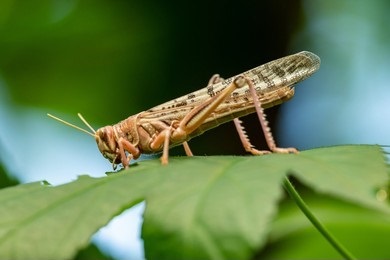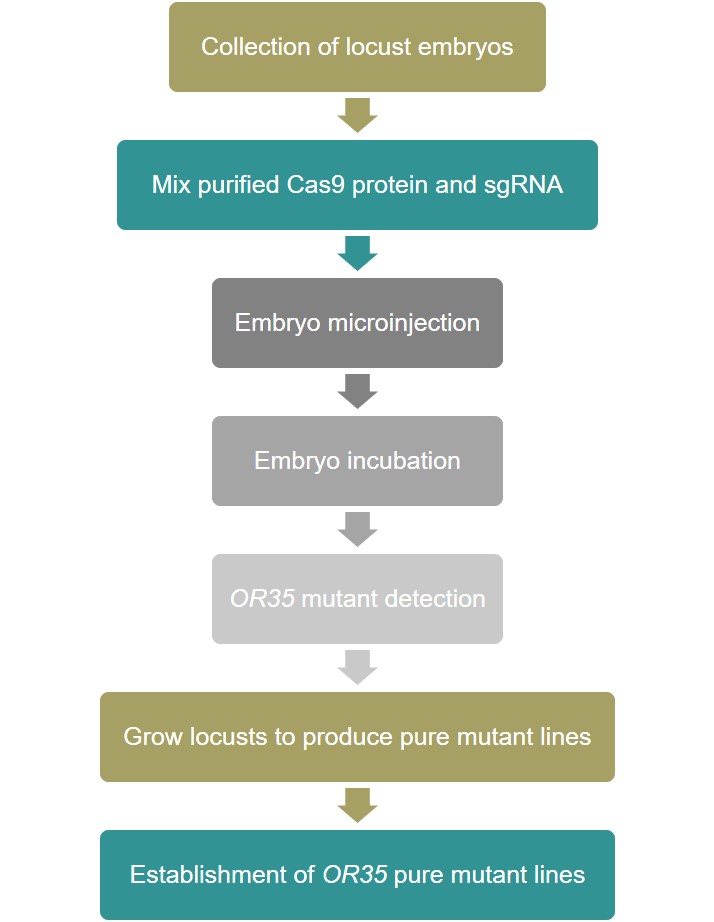The locust is an Orthoptera of the family Acrididae. There are over 10,000 species of locusts worldwide, and they are found in tropical and temperate grasslands and desert areas around the world. It is the most widespread locust in the world and remains an important agricultural pest in Africa, Asia, the Middle East, and Australia. In recent years, Russia, North and South America have also experienced local locust infestations. Worldwide, locust infestations continue to pose a significant threat to agriculture, the economy, and the environment.
Despite the long history of locust infestations with human development, the true scientific understanding of the causes of locust infestations is less than a century old. Uvarov, the internationally renowned entomologist and father of locustology, discovered that locusts can become a plague because they can shift from low-density dispersal to high-density swarming. Once the swarming locusts are formed, the locusts can move or migrate in large numbers, leading to larger locust infestations.

It was only in the 1970s that international scientists gradually realized that swarming pheromones may be the most critical factor for locusts to be able to gather. After years of continuous efforts by several generations of scientists, several compounds have been suggested as possible swarming pheromones for locusts, and these pheromones have been named locustol, etc.
The CRISPR/Cas9 system, as a third-generation gene-editing technology, is an RNA-guided genome-targeted editing technology. The interpretation of various scientific problems in entomology through the CRISPR/Cas9 system has become an important tool for entomological research, providing new ways and new ideas for research in the fields of insect gene function, insect bioreactors, pest control, and molecular improvement of economic insects. Lifeasible can precisely edit the locust genome sequence, which has the advantages of the simple experimental process, short time, and low workload, and has broad application prospects in exploring locust gene functions, repairing damaged genes, silencing harmful genes, and improving quality traits.
Among hundreds of olfactory receptors in locusts, scientists have identified OR35, an olfactory receptor localized in the cone sensor, as a specific receptor for 4VA (4-vinylanisole). 4VA is highly attractive to both swarming and dispersing locusts at different developmental stages and sexes. 4VA can respond to changes in locust population density, increasing with increasing population density, and even its 4VA has an important role as a swarming pheromone in locust swarming, and Lifeasible has successfully knockout OR35 using the gene-editing technique CRISPR/Cas9, and the tentacle and cone sensor neurophysiological responses of the knocked-out locust mutants were significantly reduced, and the mutants also showed a loss of responsive behavior and attractiveness to 4VA responsive behavior and loss of attractiveness.

Locust control has long relied on large-scale spraying of chemical insecticides, and the unreasonable use of chemical pesticides has had a huge negative impact on food safety, ecosystems, and human health. In contrast, Lifeasible used CRISPR/Cas9-mediated gene-editing technology to create 4VA response deficient mutants, making green and sustainable locust control possible. The long-term release of these mutants into the wild may establish locust populations in hard-hit areas that cannot swarm, maintaining a certain number of locusts in the wild while achieving sustainable control, combining environmental protection with pest control. If you are deeply troubled by the locust disaster and want us to do some genetic modification of the local locusts, or if you have a need for locust gene editing, you are welcome to contact us, In addition, if you have any other questions or any inquiry requirements, please contact Lifeasible.
References: